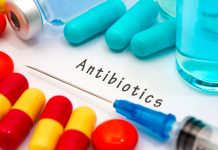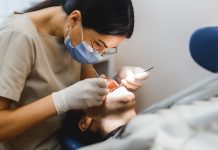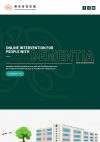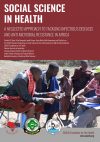Michele Calabro’, European Health Management Association Policy and Communications Manager explains antimicrobial resistance (AMR), focussing on why Europe still needs to talk about a preventable crisis that could cause more deaths than cancer
Antimicrobial resistance (AMR) (1) has been at the centre of the healthcare debate both in Europe and globally for an extended period. Numbers clearly illustrate the urgency of keeping a high level of attention on this topic, both at societal and economic level. AMR is estimated to be responsible for around 25,000 deaths per year in the European Union (2), 700,000 at the global level and projected 10 million deaths every year in 2050, (3) compared to, for example, eight million cancer-related deaths. Such stark numbers need also to be coupled with the healthcare and productivity loss estimated costs, which adds up to €1.5 billion annually in the EU alone, with an expected potential impact worryingly close to the financial crisis that hit global economies in 2008. (4)
The European Health Management Association, located at the heart of the European dialogue and debate in Brussels, is offered numerous opportunities to participate in many of events, conferences, and research presentations on this topic, proving the buzz and commitment around it. Undoubtedly, EU institutions are trying to play a key role, in particular with the European Commission’s 2017 EU One Health Action Plan against Antimicrobial Resistance (5).
The Plan is a good example of the ‘health in all policies – one health’ approach that the Commission is supporting and that is fundamental for AMR: the whole of society – that is a multi-sectorial approach to health hazards, in this case covering human health, environment but also agriculture, food and animal industry. Achieving its objectives revolves around three ambitious pillars: making the EU a best practice region: boosting research, development and innovation and intensifying EU efforts worldwide to shape the global agenda on AMR.
Looking at these promising interventions, it would be possible to think that the situation is largely under control and that all the key players are on the same track to tackle AMR. However, the reality is probably still far from being perfect, and it is clear that Europe still needs to talk about this issue and take further action; the key being to avoid taking the foot off the pedal. With the Plan in place, and with the future of health in the EU at risk, it is time for the Commission and DG Sante to really push, within the treaty limits, for a concrete move from policy development to policy implementation.
The involvement of all the stakeholders associated with AMR must become more than a wish list on a piece of paper. Healthcare professional associations need to take responsibility for continuing this topic; educational organisations need to ensure that AMR prevention has the right space in CPD training and education curricula; civil society organisations need to sensitise citizens about the risk of incorrect self-care and self-medication; the industry has to find solutions in R&D; the food and agriculture industry must understand the risk connected to AMR within their activities and implement guidelines and actions to reduce said risks (6).
What is AMR?
Antimicrobial resistance happens when microorganisms change when they are exposed to antimicrobial drugs (such as antibiotics, antifungals, antivirals, antimalarials, and anthelmintics). Microorganisms that develop antimicrobial resistance are sometimes referred to as “superbugs”. As a result, the medicines become ineffective and infections persist in the body, increasing the risk of spread to others.
(Source: World Health Organisation)
And of course, institutions, both at national and supranational levels, have the responsibility to provide the right tools, from funding to instruments and measuring, in order to create the right space to allow the main actors to take action on AMR. Antimicrobial Resistance ‘traditional’ measures and awareness raising (7) will have to be integrated with parallel preventive actions, including a necessary focus on the importance of rising vaccination rates (human and animal) and new vaccine research.
From EHMA’s point of view, we will keep promoting this topic with our diverse constituency, focussing, for example, on the following four key points for health managers, one of the core components that make up our membership, together with research and policymaking: assess current situation regarding systems and infrastructure focussed on minimising the organisational impact of AMR; review best practice on systems for operational response to risk of AMR; ensure boards considers problem, policies and monitoring, making links to health care-associated infection (HCAI), procurement, prescribing policies, etc.; and to assess training and information needs.
Naturally, as mentioned, health managers are only a tiny part of the constellation of stakeholders, citizens included, that need to take full responsibility. AMR is a battle that must be won and can be won, but only by setting aside silos and taking off ‘blinkers’ can we can finally move from policy to practice in a cohesive and harmonized way.
References
- WHO, What is Antimicrobial Resistance? http://www.who.int/mediacentre/factsheets/fs194/en/.
- ECDC, The bacterial challenge: time to react https://ecdc.europa.eu/sites/portal/files/media/en/publications/Publications/0909_TER_The_Bacterial_Challenge_Time_to_React.pdf.
- Review on Antimicrobial Resistance, Tackling Drug-Resistant Infections Globally: Final Report and Recommendations, 2016 https://amrreview.org/sites/default/files/160525_Final%20paper_with%20cover.pdf.
- World Bank, 2016, ‘Drug-Resistant Infections: A Threat to Our Economic Future’, Washington, DC.
- European Commission, EU One Health Action Plan against Antimicrobial Resistance, 2017 https://ec.europa.eu/health/amr/sites/amr/files/amr_action_plan_2017_en.pdf.
- http://www.fao.org/antimicrobial-resistance/en/.
- https://antibiotic.ecdc.europa.eu/en.

Policy and Communications Manager
Michele Calabro’
Policy and Communications Manager
European Health Management Association
Tel: +32 (0)2 502 6525
Editor's Recommended Articles
-
Must Read >> The overuse of antimicrobial agents in agriculture
-
Must Read >> Preventing infections with antimicrobial surfaces





























